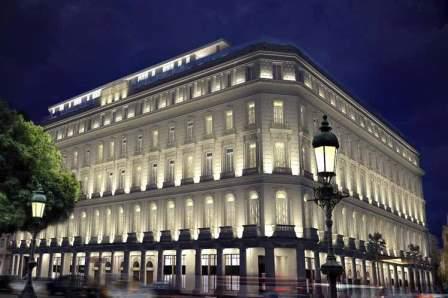Havana.- The Gran Hotel Manzana Kempinski La Habana, which will opened this month, according to official announcements, is showing today a long history linked to the trade and development of the Cuban capital.
This facility is located in front of the Central Park and the statue erected to Cuban National Hero Jose Marti, in one of the most populous places of the city, with a large influx of foreign visitors.
The six-story, 246-room hotel will feature five-star plus and its surroundings will feature stores with products from world-renowned brands.
The hotel has a long history, closely related to the commerce of this capital, when historians and researchers remember today some details about the place.
Some people described it at the time as an impressive monument to trade in Havana, monster with hermetic facades and view to the Central Park, now with second life.
Havana historian, Eusebio Leal, confirmed its reconstruction. The weather previously deteriorated the building and the shops that occupied its spaces.
Cuban journalist and historian, Ciro Bianchi, mentioned the issues at the time and warned that this place has been for more than 100 years a reference for people in Havana, since many persons had the phrase: 'I bought it in the Manzana de Gomez building,as the hotel was popularly known'.
This building is bounded by San Rafael, Neptuno, Monserrate and Zulueta, and occupied only one floor in its beginnings, with covered galleries until 1918 when four levels were built, and eight elevators were placed to facilitate the accesses.
About 560 cubicles were used in offices, and other instances such as the Pittman business academy located on the second level and Gregg business academy in the fifth, with students looking to prepare themselves in shorthand and typing.
Historians state that Julian de Zulueta y Amondo, Marques de Alava, began the construction of the building and for this purpose, the efforts by Spanish architect Pedro Tome Verecruisse were requested. However, the building remained incomplete for many years, finally the Gomez Mena family would end it.
The definitive expansion, the elevators, and 560 apartments with corridors and portals from where around 25,000 people passed daily, took place by 1918.
Source:PL











